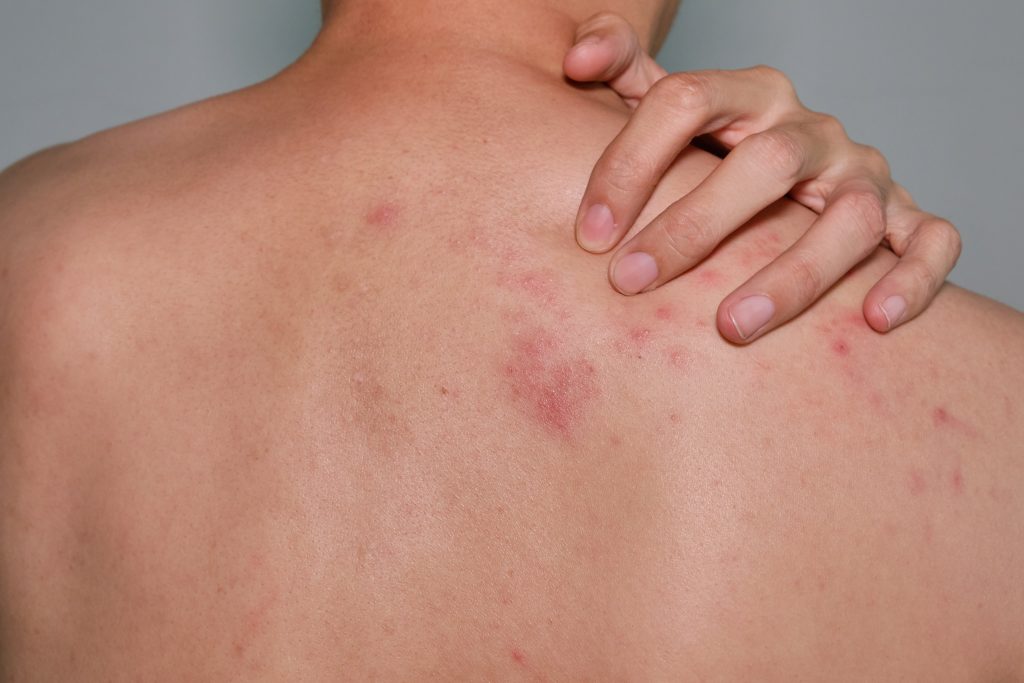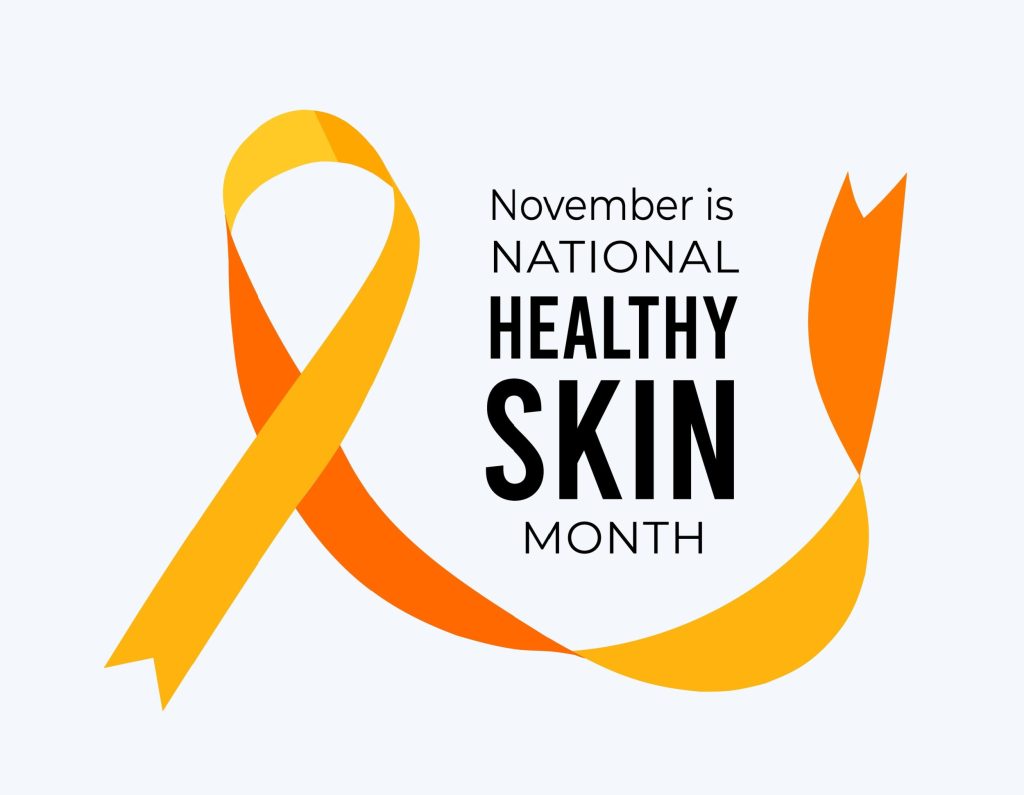
Shingles is a viral infection caused by the reactivation of the varicella-zoster virus (VZV), the same virus that causes chickenpox. This painful condition can affect anyone who has had chickenpox in the past, and its symptoms can be painful and distressing. At Florida Dermatology and Skin Cancer Centers, we know how uncomfortable it can be to have a skin infection. We want to take the next few minutes to equip you with information about what shingles is, how to diagnose and treat it, who is at risk, prevention strategies, and the role we play as dermatologists in managing shingles. Hopefully with this information, you will know exactly what to do and who to call should you or a loved one get shingles.
What is Shingles?
Shingles is characterized by a painful, blistering rash that typically appears on one side of the body or face. It occurs when the VZV, which remains dormant in nerve cells after an initial chickenpox infection, becomes reactivated. The exact cause of this reactivation is not always clear, but factors such as a weakened immune system, stress, and natural aging can increase the risk.
Shingles typically presents with a range of symptoms, which can vary in severity. Common symptoms of shingles include:
- Pain: Shingles often begins with a burning, tingling, or shooting pain in a specific area of the body, usually on one side.
- Rash: A red, blistering rash typically appears after the onset of pain. This rash usually follows a specific nerve pathway and can be quite painful.
- Blisters: The rash develops into fluid-filled blisters that can break open and crust over. These blisters are often clustered.
- Itching: Itching can accompany the rash, adding to the discomfort.
- Fever: Some individuals may experience a low-grade fever along with other symptoms.
- Fatigue: Shingles can cause fatigue and general feelings of unwellness.
- Sensitivity to Touch: The affected area may become sensitive to touch, making clothing or even air contact painful.
- Headache: Some people with shingles may experience headaches.
- Lymph Nodes: Swelling of nearby lymph nodes can occur.
- Nerve Pain: After the rash heals, some individuals may continue to experience persistent nerve pain in the affected area. This condition is called postherpetic neuralgia (PHN).
It’s important to note that shingles symptoms typically occur on one side of the body or face, following the path of the affected nerve. If you experience these symptoms or suspect you have shingles, it’s crucial to seek medical attention promptly, especially since early treatment can help alleviate symptoms and reduce the risk of any complications.
Diagnosing Shingles
Diagnosing shingles usually involves a physical examination by a healthcare professional who can identify the distinctive rash and associated symptoms. Sometimes, a sample from a blister may be taken and tested in a laboratory to confirm the presence of the VZV. If you suspect you have shingles, call your dermatologist’s office.
Treating Shingles
Shingles can be extremely uncomfortable, but timely treatment can help manage symptoms and speed up recovery. Treatment options include:
- Antiviral Medications: These drugs, such as acyclovir, valacyclovir, and famciclovir, can help reduce the severity and duration of the outbreak if taken early in the course of the disease.
- Pain Relief: Over-the-counter pain relievers like ibuprofen or prescription medications may be recommended to manage pain and discomfort.
- Topical Creams: Calamine lotion or creams containing capsaicin may provide relief from itching and pain associated with the rash.
- Rest and Hydration: Resting and staying well-hydrated can aid the body in its recovery.
- Management of Complications: In severe cases or when complications like postherpetic neuralgia (persistent pain after the rash has healed) occur, additional treatment or pain management techniques may be needed.
Who is at Risk for Developing Shingles?
Anyone who has had chickenpox can develop shingles. However, some factors increase the risk:
- Age: Shingles is more common in people over 50, and the risk increases with age.
- Weakened Immune System: Conditions or treatments that weaken the immune system, such as cancer, HIV/AIDS, or certain medications, can increase the risk of shingles.
- Stress: High levels of stress can weaken the immune system and trigger shingles in some individuals.
Prevention of Shingles
While it’s not always possible to prevent shingles completely, there are steps you can take to reduce the risk:
- Vaccination: The CDC recommends the shingles vaccine for adults aged 50 and older. It is highly effective in preventing shingles and its complications.
- Healthy Lifestyle: Maintaining a healthy lifestyle with regular exercise, a balanced diet, and stress management can support a strong immune system.
- Avoiding Contact: If you have shingles, avoid close contact with individuals who have not had chickenpox or the chickenpox vaccine, as VZV can be transmitted through direct contact with the rash.
How Can a Dermatologist Help with Shingles?
Dermatologists play a crucial role in managing shingles by providing expert care for the skin-related aspects of the condition. They can:
- Confirm the Diagnosis: Dermatologists can accurately diagnose shingles based on the distinctive rash and other skin symptoms.
- Offer Treatment Options: Dermatologists can prescribe medications and recommend topical treatments to alleviate pain and promote healing of the rash.
- Manage Complications: In cases where complications like scarring or postherpetic neuralgia arise, dermatologists can provide specialized care and treatment.
Early diagnosis and treatment are crucial for managing symptoms and preventing complications. Seeking help from a dermatologist is an essential step in the treatment and management of shingles. If you suspect you have shingles or are concerned about the condition, consult your dermatologist for guidance and care.
Contact FLDSCC for All Your Skin Care Needs
Florida Dermatology and Skin Cancer Centers provides a full spectrum of dermatology and skin care services, and its team of physicians, APRNs, and PAs are experts in diagnosing and treating skin cancers with the latest technological options. Medical Director, Dr. K. Wade Foster, is fellowship-trained in Mohs surgery, the most effective technique for most types of skin cancers, with minimal scarring or risk.
For more information about the services that Florida Dermatology and Skin Cancer Centers provides, or to make an appointment for a skin exam, visit www.fldscc.com or contact us at (855) FLD-SKIN.


